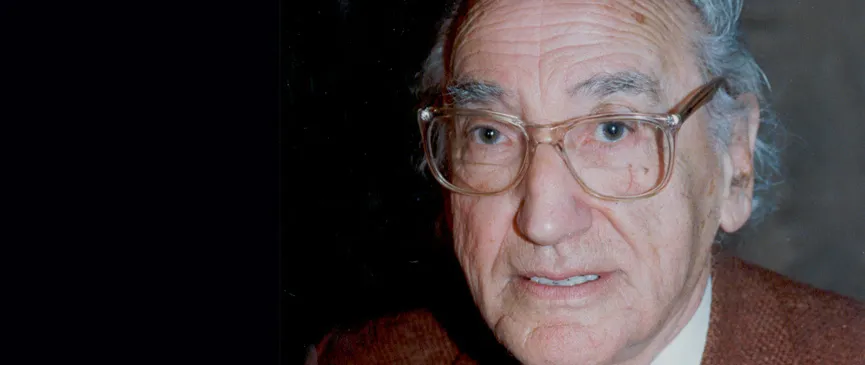Main content
Carlos Bousoño Prince of Asturias Award for Literature 1995

Carlos Bousoño Prieto (Boal, Asturias, Spain, 1923 - Madrid, Spain, 2015) studied the first two years of his Philosophy and Arts Degree in Oviedo and then moved to Madrid at the age of nineteen. He graduated in 1946 from the Complutense University of Madrid, receiving the Award for Special Achievement. He earned his doctorate in Philosophy and Arts in 1949 from that same university, with a PhD thesis on the poetry of Vicente Aleixandre, a poet of the Generation of ’27 who was awarded the Nobel Prize for Literature in 1977. This thesis, the first ever to be presented on a living writer, was published to major acclaim and continues to be considered the best and most in-depth study on the poetry of this author.
Bousoño taught Spanish Literature at several American universities (Wellesley, Smith, Vanderbilt, Middlebury and NYU, among others), and Style at the Complutense University of Madrid, where he subsequently held the position of Professor Emeritus. Awarded an honorary degree by the University of Turin (Italy), he was a permanent member of the Spanish Royal Academy (RAE) from 1980 until his death. He was also an honorary fellow of The Hispanic Society of America. He was a stunning lecturer. His classes at the Complutense University were always master classes that Bousoño gave without using notes. His fame as a lecturer brought the most outstanding poets and writers studying at the Complutense University to his lectures. These included Claudio Rodriguez, Mario Vargas Llosa, Francisco Brines and José Olivio Jiménez, among others.
His poetic oeuvre is prolific. His first collection of poetry, Subida al Amor (1945), revealed the reflexive vein of existentialism or of rootless poetry of the young poets who, following the Spanish Civil War, dramatically assumed the conflict between an existentialist view of life and profound religious faith. This was followed by Primavera de la muerte (1946), a collection in the same vein, though with closer links to mysticism. Both books were jointly reprinted under the title Hacia otra luz (1950). His later works include Oda en la ceniza (1967, Critics Prize), Las monedas contra la losa (1973, Critics Prize), Metáfora del desafuero (1988, National Poetry Award) and El ojo de la aguja (1993). In all these books, his style evolved between realism and symbolism and, although he never abandoned his existentialist roots, his gaze became more one of solidarity and his style became less restrained.
From a young age, he became interested in the investigation of poetic phenomena, especially the various forms of metaphor. As a theoretician of literature, he carried out in-depth research into the poetic phenomenon and symbolist poetry. His book Teoría de la expresión poética (1952) was a fundamental theoretical work on the subject in the Spanish language in the 1950s and 60s. In this book, Bousoño sought to unravel the secrets of the poetic phenomenon: how poetic language arises from the delexicalization of everyday language; and how that differs from jokes, for example. He subsequently published El irracionalismo poetico. El símbolo (1979) and Superrealismo poético y simbolización, in which he clarified for the first time, and at the global level, why surrealist poetry is so difficult.
Another important theoretical book of his is Épocas literarias y evolución, in which he analysed literary epochs and the peculiar way in which they evolved.
He was awarded the Fastenrath Prize by the Royal Spanish Academy (RAE) in 1952 for Teoría de la expresión poética, the Critics Prize for Castilian Poetry in 1968 and 1974, for Oda a la ceniza and Las monedas sobre la losa, the National Essay Prize in 1978, for El irracionalismo poético (El símbolo), the National Poetry Prize in 1990, for Metáfora del desafuero, and the National Spanish Literature Prize in 1993.
End of main content
